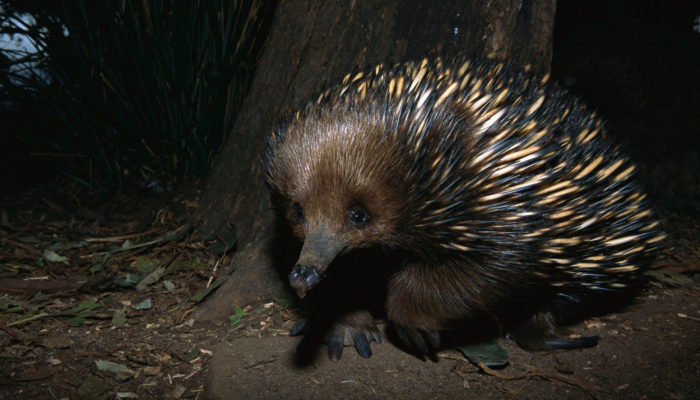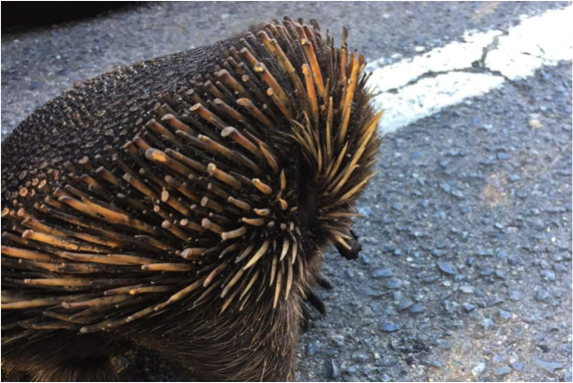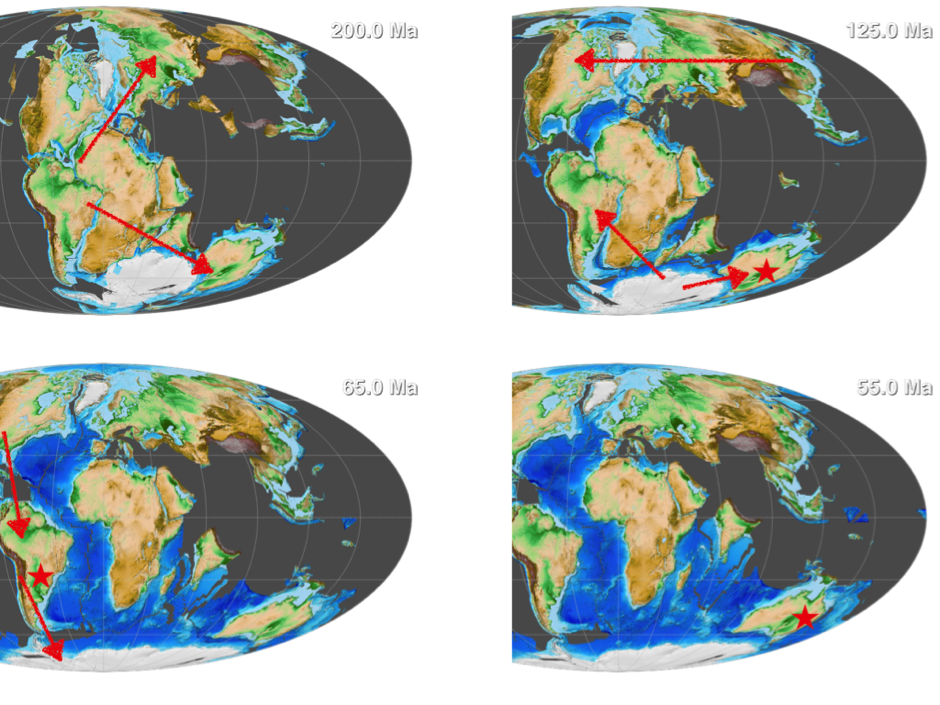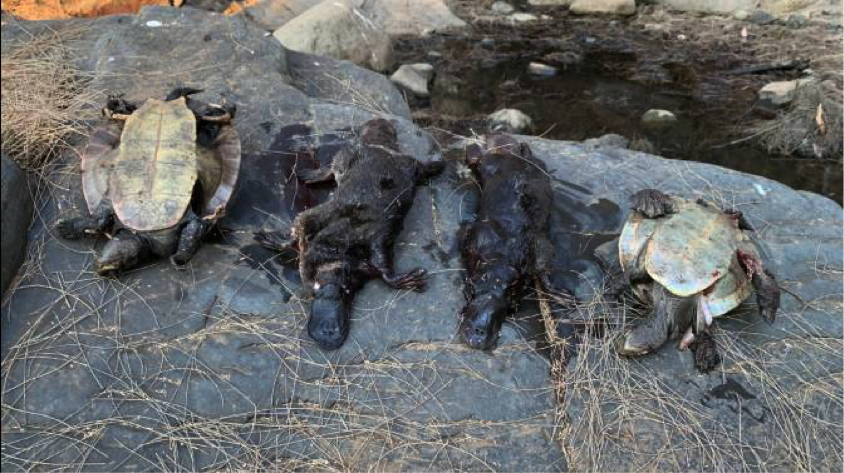
This week, Craig O’Neill, Associate Professor and director of the Planetary Research Center at MacQuarie University shows that not only humans are suffering from the consequences of global warming.
The recent Australian bushfire season has precipitated a shift in the Australian – and the world’s – perception of the urgency of addressing climate change. With most of the east coast of the continent covered in thick smoke, many Australians were faced with reality of spending the entire season not at the beach or in the sun, but indoors, battling respiratory conditions. Many of us have lost houses, properties, schools – but not a sense of community.
Perhaps the most confronting is the scale of death of native animals – with conservative estimates of over 1 billion animals[1] lost. This includes some of Australia’s most iconic species, such as koalas – with reports suggesting the conflagration and fragmentation of their habitat may drive them to “functional” extinction[2].
But perhaps most at risk are some of the mammal species that are – arguably – the original Australians.
The monotremes
With a prickly exterior, short-sight, utter contempt for ant attacks, and a tendency to bury its head in the ground when threatened, the echidna is the spirit animal we all need. With one species – the short beaked echidna – in Australia, and three long-beaked species in New Guinea (including the wonderfully named Sir David’s long-beaked echidna, Zaglossus attenboroughi, named after Sir David Attenborough), the echidnas have bumbled their way through the Australasian landscape for over 20 million years. Together with the one extant species of platypus, these species – the monotremes – form the last surviving members of a group of mammals that once dominated the southern hemisphere.
The monotremes are the only egg-laying mammals – a trait inherited from their early mammal-like reptile forbears. That has led to a belief that they are primitive. But they have, of course, been evolving just as long as other mammals. The platypus has developed some unique evolutionary innovations, evolving one of the few mammal toxins – found in the back-leg spurs on the males. Whilst not fatal, it is said that a platypus sting is so painful that one wishes it were. On top of a highly sensitive electro-sensory system on the snout, platypuses have taken their own evolutionary road through history.

The monotremes: Left – Platypus (Ornithorhynchus anatinus, Source: The Guardian). Right, top: Short beaked echidna (Tachyglossus aculeatus, Source: Nature picture library). Right, bottom: Western Long beaked echidna (Zaglossus bruijni, Source: https://news.mongabay.com/2015/10/the-long-beaked-echidna-can-we-save-the-earths-oldest-living-mammal/).
Lacking the long legs of kangaroos, or flight of birds, echidnas have but one defence against a predator, bushfire, or, really, any of the life’s problems. They dig. Whilst not known for true burrows, they can submerge much of the body in the soil, leaving only their spikes showing. This has enabled them to survive even passing bushfires – although not entirely unscathed.

Bushfire survivor. Echidna with burnt spikes survived by burrowing into the dirt. Source: https://www.abc.net.au/news/2020-01-31/burnt-echidna/11913818.
Origins
Monotremes, and marsupials, are typically characterised as Australian. Despite the familiarity of marsupials in Australia, it is surprising to learn that they actually evolved in the northern hemisphere, contemporaneously with placentals. The oldest known marsupial fossils are found in China (125 million years ago), and the USA (110 million years ago)[3], and they are closely associated with placentals mammals, like us. Together, this northern-hemisphere mammal group has called the boreosphenidans[4] – and includes all non-monotreme mammals alive today.
The monotremes, on the other hand, are part of an ancient group of mammals that diverged from the other surviving mammals somewhere in the Triassic. These early mammals, the Yinotheres, spread across the Pangaean landscape in the Triassic, with early Laurasian forms found in the Jurassic from China to England. In the southern hemisphere, this group became the Australospheridans[4], spread far across the Gondwana. The earliest fossils are Cretaceous, including the first monotreme in the fossil record, the 110 million year old Steropodon, an opalised fossil from Lighting Ridge in NSW[5]. Steropodon looked remarkably like a modern platypus, suggesting that the platypus lifestyle – living in freshwater streams, and burrowing into riverbanks – has been remarkably successful. In fact 61 million year old platypus fossils have been found in Argentina, and other Australosphenidans are known from Madagascar, indicating this was a far-ranging successful group.
What, then, happened to the Australosphenidans elsewhere in the world?
Of plates and platypuses
The tail of the humble echinda is one of geodynamics. Early Triassic mammals ranged widely across Pangea, but following its the rifting into Laurasia and Gondwana, these lineages diverged. On Laurasia, boreosphenidons, such as marsupials and placentals, evolved. On Gondwana, the Australosphenidans – including the monotremes – dispersed widely, and the oldest example, Steropodon, is from Australia 110 million years ago.

Reconstructions using gPlates of major events in monotreme evolution. 200Ma: archaic mammals spread out over Pangaea from the Triassic to early Jurassic (red arrows). 125Ma: Laurasia and Gondwana have split. Earliest known marsupials in China, and at 110Ma in the US, ranging across Laurasia (top red arrows). Australosphenidans range widely across Gondwana (red arrows). Earliest fossil monotreme (Steropodon) in Australia at 110Ma (red star). 65Ma: Marsupials cross into South America via a land bridge (red arrows). At 61Ma, platypuses are found in South America (red star). 55Ma: Earliest marsupials fossils in Australia (red star), marsupials start to displace Australospheridans from most niches, leaving only the echidnas and platypus today.
At about 65Ma a landbridge between North and South America allowed the marsupials to move into Gondwana[6]. The temperate conditions of the Paleocene and early Eocene meant Antarctica was habitable for these animals, and they dispersed across it as far as Australia – the first marsupial fossil in Australia is 55 million years old.
Exactly how marsupials and monotremes interacted upon contact is unknown, but while the marsupials diversified and expanded into the Australian environment, the monotremes seemed to contract.
Enter the Echidna
However, they had another trick up their sleeve. Molecular clock evidence points to the split between platypuses and echidnas between 19-48 million years ago[7]. Given the ancestral forms of monotremes were platypus-like, this suggests the echidna is a recent arrival. But the echidnas have been the great monotreme success story of the Cenozoic, diversifying into 4 extant new species in Australasia – the short-beaked echidna of Australia, and the 3 long-beaked echidnas of New Guinea. And again, their story is tied to the geodynamics of their range.
The New Guinea highlands began to rise about 12 million years ago, in response to convergence of the Australian plate, with active subduction systems to the north[8]. The highlands preserve arc-continent collision and mobile belt deformation, and significant volcanism. By about 8Ma elevations were ~2km, and by 4Ma, possibly in response to lithospheric delamination, the highlands had reached ~4km in elevation.
The evolution in topography created opportunities for speciation for the echidnas, which capitalised on these new habitats. Whilst long-beaked echidnas once existed in Australia, they have survived and diversified in the remote New Guinea ranges. With 3 of the 5 extant monotreme species inhabiting the highlands todays, it is now the (humble) hotbed for monotreme diversity worldwide, and the last bastion of the Australosphenidans.
Outlook
The outlook for the survival of monotremes is – to be blunt – suboptimal. The waterways on which the platypus depends have been pushed to the extreme in water-poor Australia, by extreme drought, fires, land-clearing, agriculture, and dams. The most recent studies suggest that platypuses have been wiped out in 40% of their previous range – a number set to reach over 70% by 2070, due to climate-related factors[9].

Post-2020 bushfire fatalities: dead turtles and platypuses from eastern Australia. Source: Aussie Ark.
Echidnas are less dependent on waterways, but their range has been severely affected by land-clearing in eastern Australia. They are somewhat fire-resistant, able to enter a subdued metabolic state called ‘torpor’ in the aftermath of large fires, and thus conserve energy during times of low food supply[10]. Australia’s short-beaked echidna is not currently listed as threatened, but two of the long beak echidnas of New Guinea are: both the Western Long-Beaked Echidna[11], and Sir David’s Echidna[12], are listed as critically endangered – the former having lost over 80% of its habitat over the past 50 years.
My morning commute takes me through the Lane Cove National Park in Sydney – a small island of green in an increasingly urban city landscape. Sometimes I ditch my bike and hike through, and on a few occasions have heard the sounds of scuffling digging, and on investigating, been greeted by some of the resident echidnas – their tiny eyes considering me warily, before burying their heads in sand and presenting their spikes, and reminding me why they are my spirit animal. To find an echidna in urban Sydney is much like spotting a unicorn. These ancient monotremes are clinging on in their fractured habitats, reminding us that they are a lineage that once survived the dinosaur extinction. Let’s hope they survive us too.
[1] https://www.abc.net.au/news/2020-01-31/fact-check-have-bushfires-killed-more-than-a-billion-animals/11912538
[2] https://theconversation.com/a-report-claims-koalas-are-functionally-extinct-but-what-does-that-mean-116665
[3] http://www.abc.net.au/science/news/ancient/AncientRepublish_1008521.htm
[4] Dawkins, R. and Wong, Y., 2016. The ancestor’s tale: A pilgrimage to the dawn of life. Hachette UK.
[5] Archer, M.; Flannery, T. F.; Ritchie, A.; Molnar, R. E. (1985). “First Mesozoic mammal from Australia — an early Cretaceous monotreme”. Nature. 318: 363–366. doi:10.1038/318363a0.
[6] Boschman, Lydian M.; van Hinsbergen, Douwe J.J.; Torsvik, Trond H.; Spakman, Wim; Pindell, James L. (23 August 2014). “Kinematic reconstruction of the Caribbean region since the Early Jurassic”. Earth-Science Reviews. 138: 102–136. CiteSeerX 10.1.1.727.4858. doi:10.1016/j.earscirev.2014.08.007
[7] Phillips, MJ; Bennett, TH; Lee, MS (October 2009). “Molecules, morphology, and ecology indicate a recent, amphibious ancestry for echidnas”. Proc. Natl. Acad. Sci. U.S.A. 106 (40): 17089–94. doi:10.1073/pnas.0904649106. PMC 2761324. PMID 19805098.
[8] Baldwin, S.L., Fitzgerald, P.G. and Webb, L.E., 2012. Tectonics of the New Guinea region. Annual Review of Earth and Planetary Sciences, 40.
[9] https://www.sbs.com.au/news/extreme-drought-pushing-platypus-population-to-brink-of-extinction
[10] https://www.discovermagazine.com/planet-earth/echidnas-are-too-cool-to-be-bothered-by-fires
[11] https://www.iucnredlist.org/species/23179/21964204
[12] Leary, T., Seri, L., Flannery, T., Wright, D., Hamilton, S., Helgen, K., Singadan, R., Menzies, J., Allison, A., James, R., Aplin, K., Salas, L. & Dickman, C. 2016. Zaglossus attenboroughi . The IUCN Red List of Threatened Species 2016: e.T136322A21964353. https://dx.doi.org/10.2305/IUCN.UK.2016-2.RLTS.T136322A21964353.en.

